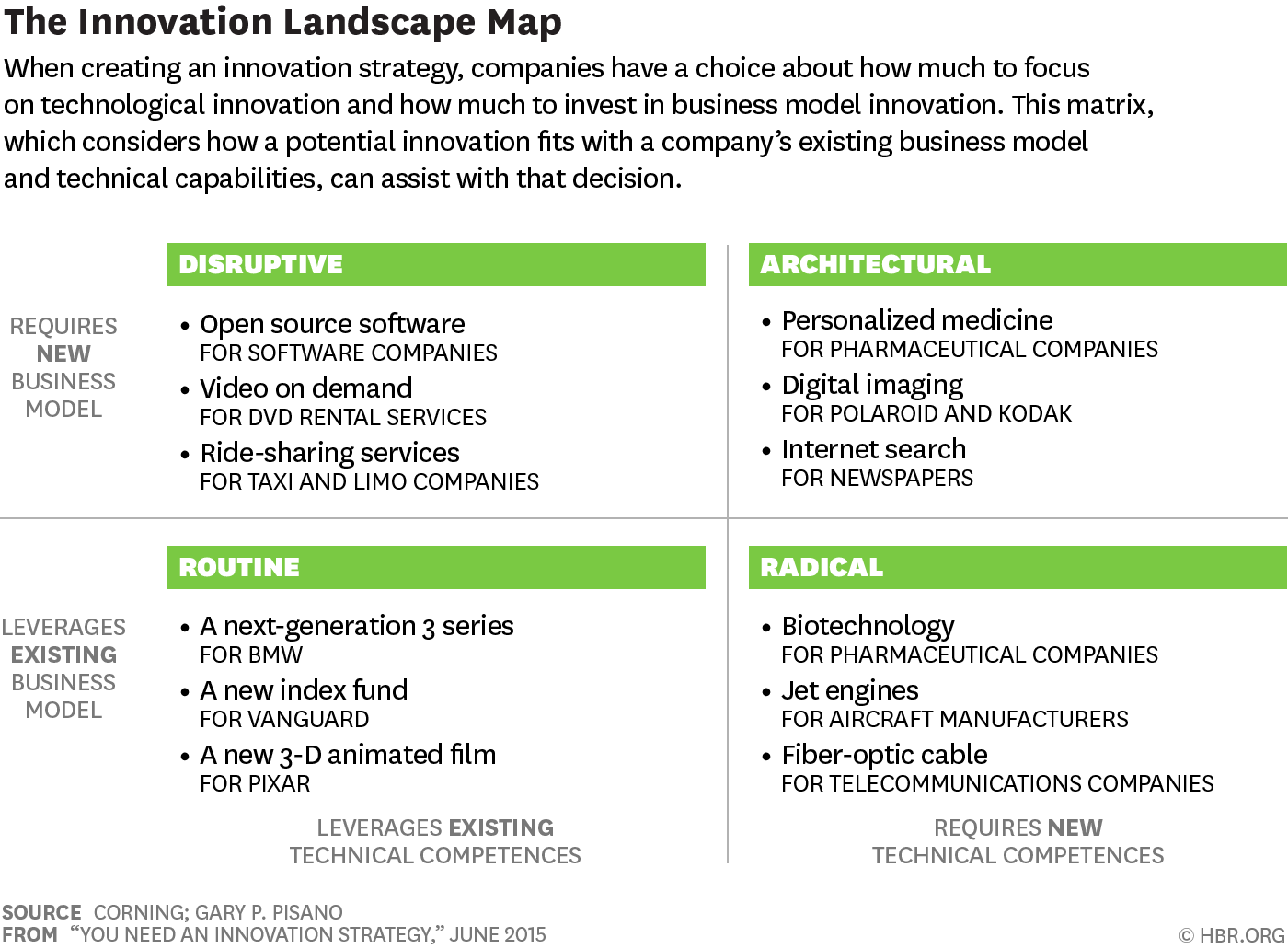Has your company developed an innovation strategy?
This is a strategy to define the role of innovation and set the course for its execution in your company. Many companies espouse the desire to be innovative, but lack the clear strategy to develop effectively.
What are some key factors for developing an effective innovation strategy? Let’s take a closer look:
The strategy should be inspiring
“Aim high” should always be a key part of any strategy. Overall, it should describe the desired future state for your company and be inspiring. A strategy is not “tactics.” For example, it doesn’t mean grasping onto the latest trends in technology just because they are trending. This might encourage some short bursts of enthusiasm, but overall it is neither sustainable nor inspiring.
On the other hand, an innovation strategy is a plan to motivate technological advancements for the achievement of your desired future state. For example, some organizations innovate to remain relevant – they don’t want to be left behind by competitors. Others innovate to become trendsetters in their field and to develop a reputation for being on the cutting-edge.
Arguably, corporate strategy tends to come first, but you could also argue that good innovation strategy should help your company to shape corporate strategy. Consider this passage from HBR:
“A strategy is nothing more than a commitment to a set of coherent, mutually reinforcing policies or behaviors aimed at achieving a specific competitive goal. Good strategies promote alignment among diverse groups within an organization, clarify objectives and priorities, and help focus efforts around them. Companies regularly define their overall business strategy (their scope and positioning) and specify how various functions—such as marketing, operations, finance, and R&D—will support it. But during my more than two decades studying and consulting for companies in a broad range of industries, I have found that firms rarely articulate strategies to align their innovation efforts with their business strategies.”
Unite around a vision
An innovation strategy often begins with a clear vision for the end-state the company would like. Part of being “inspiring” can be to create a vision which your team and key stakeholders can easily unite around.
For example, Uber has previously stated a vision of “ending car ownership” and more recently talked of on-demand flying cars. A vision that is simple and clearly stated can help you to gain buy-in, a key part of enacting your strategy.

The process should be open
A common thread across many innovative companies is that they don’t isolate themselves or rely solely on their internal capabilities for innovation. For example, Uber has partnered with Carnegie Mellon University to deliver research into robotics (although at this point, not a lot has been done about it).
Being open means that you are willing to include the outside world in some way. The most innovative companies out there acknowledge that there are more sources of good information than within their own walls. In fact, an unwillingness to be open could stifle innovation.
Even within the company, an open process is important. For example, how do you gain the buy-in of affected team members? Uniting them around a clear vision is one strategy, but also consider the benefits of being open about the process and open to their input. There may be people who work within the systems and processes of the company every day who have great ideas but don’t often have the opportunity to contribute to the conversation.
Desired outcomes should be clear
How will you define your vision? It’s a good practice to be explicit about the desired outcomes for your company. Without these, you run the risk of that “tactics” scenario again. You might have departments branching off to do their own things, creating an inefficient approach to innovation.
“…without an innovation strategy, different parts of an organization can easily wind up pursuing conflicting priorities—even if there’s a clear business strategy. Sales representatives hear daily about the pressing needs of the biggest customers. Marketing may see opportunities to leverage the brand through complementary products or to expand market share through new distribution channels. Business unit heads are focused on their target markets and their particular P&L pressures. R&D scientists and engineers tend to see opportunities in new technologies.” – HBR
It helps to think about what your end goals are. Business Queensland provides some good suggestions for potential desired outcomes of innovation strategy:
- Develop a new product – you may see an opportunity for a radical change in the type of products offered on the market.
- Protect market share – in a dynamic global environment, continuous innovation is required in many instances just to maintain market share.
- Expand market share – for example, offering existing products in a different market.
- Sell or license to another organization – you may be looking at an exit strategy, once the innovation is developed you can sell or license the innovation.
- Retain more staff – a commitment to innovation can motivate and retain skilled staff by providing a challenging and creative environment.
- Improve operational efficiency – you may wish to reduce costs by streamlining your operations.
- Increased recognition in the marketplace – you may wish to increase your profile in the marketplace through an innovative marketing strategy.
Innovation may also be technological, impacting the business model, or both. Check out the diagram from HBR below:

Know how you will deliver value
“Unless innovation induces potential customers to pay more, saves them money, or provides some larger societal benefit like improved health or cleaner water, it is not creating value.”
Innovation just for the sake of it won’t hold value for your company or your customers. When considering your desired outcomes, knowing how you will deliver value should be a core principle. For example, it might simply come down to “we want to deliver the best possible X experience for customers.”
Lay a strong framework to support innovation
Attitudes such as “this is how we’ve always done things around here” don’t tend to be conducive to developing a successful innovation strategy. You could say that innovation begins with the culture of a company – if you remain grounded in tradition, it can be easy to miss opportunities to be innovative.
That is not to say that more traditional companies can’t be innovative – in fact, there are good examples of many that are. General Electric has been around since it was founded by Thomas Edison in the 1890s. Throughout the years, they have consistently remained at the forefront of innovative practices, including spearheading efforts into the industrial internet of things.
Plenty of companies founded before and since have already disappeared, so what keeps GE here? Their innovation strategy plays a huge role, but in fact, it goes deeper – innovation is part of their very culture. It encourages the company not to become stagnant or get too comfortable in their current position, but to keep driving forward. It is inbuilt in their very structure.
“…an organization’s capacity for innovation stems from an innovation system: a coherent set of interdependent processes and structures that dictates how the company searches for novel problems and solutions, synthesizes ideas into a business concept and product designs, and selects which projects get funded.” – HBR
Final thoughts
Innovation strategy will have an impact on every department in an organization, not just those directly involved in implementing the technology. For this reason, it’s important to set out with a clear, cohesive plan.
Your strategy should be ambitious and inspiring. It should have clear goals behind it and a defined purpose for delivering value to customers and the company.
How will you deliver?
